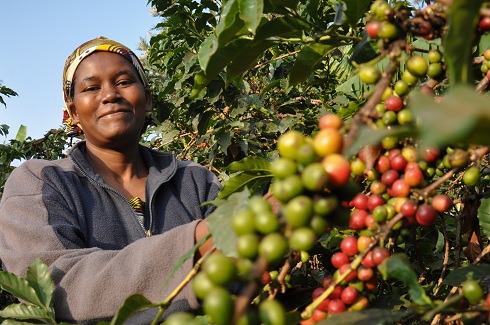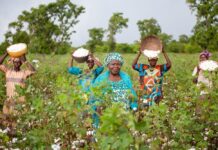
Uganda and Kenya are set to increase their coffee export in 2023/2024 marketing year thanks to the governments’ efforts to increase production and good rains after drought.
Uganda’s production will reach a record high of 6.85 million 60 kilogramme bags, a 4 per cent increase attributed to good rainfall and the maturation of new high-yielding Robusta variety planted between 2017 and 2019, according to a forecast Global Agricultural Information Network-Gains.
It also indicates that Kenya’s coffee production to increase 6.7 per cent to 800,000 bags due to recovery from drought conditions and higher fertiliser application.
Kenya’s total area harvested is expected to remain flat, at 105,000 hectares, due to a shortage of planting materials and losses associated with conversion of coffee plantations to real estate while in Uganda the acreage under coffee is increasing.
Whereas coffee consumption in Uganda is also rising to an estimated 325,000 bags, from 300,000, as result of the spread of coffee cafes in urban areas especially in Kampala, exports are expected to increase 4 per cent year-on-year as higher production increases exportable supplies.
Uganda’s government has been providing its farmers with high-quality seedling varieties and extension services from 2017 to spur production.
However, in 2020 due to Covid-19 related restrictions and limited resources the support declined, nonetheless many high-yielding Robusta trees planted before 2020 have begun to mature.
Prior to 2020, Uganda’s planted area increased as non-traditional areas began to grow Robusta with government support.
Acreage dedicated to coffee increased from 450,000 hectares in 2016/17 to 560,000 hectares in 2019/20.
Robusta in Uganda typically takes three to four years to achieve peak yields after planting. Arabica production is expected to remain steady at 1 million bags as growing conditions similar to those encountered in 2022/23 are expected to prevail.
This year Kenya has experienced good rains throughout coffee growing regions, triggering robust flowering which is expected to result in higher yields during the October 2023 harvest.
Uganda has favourable climatic conditions for coffee and farmers typically use few or no inputs to boost production. As a result, Uganda’s production is largely unaffected by variations in fertilizer prices.
Overall, prices have lagged below 2021/2022’s prices due to higher global supplies as production in key exporting countries such as Brazil and Colombia return to historical levels.
As of April 2023, 2022/23, prices averaged $194 per 50 kg bag, a 34 percent drop from 2021/22 according to the Nairobi Coffee Exchange. But while 2022/23 prices have declined, they remain above those of 2019/20 and 2018/19 which averaged $181 and $176 per bag from October to April, respectively.







